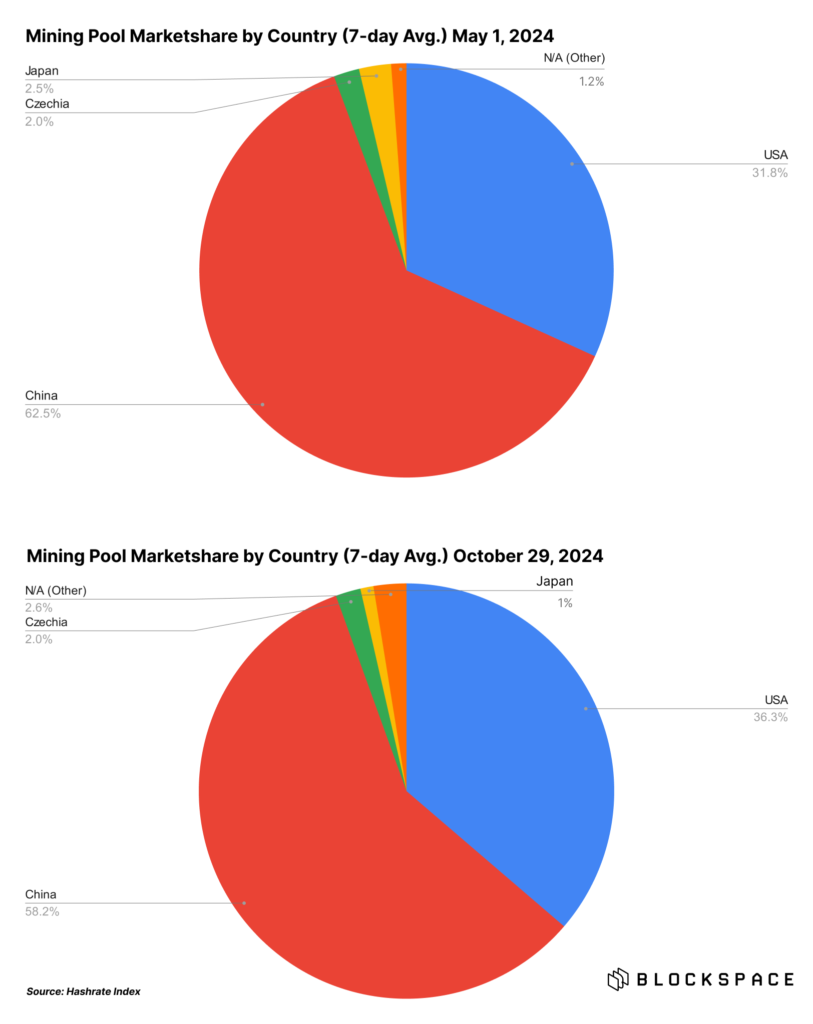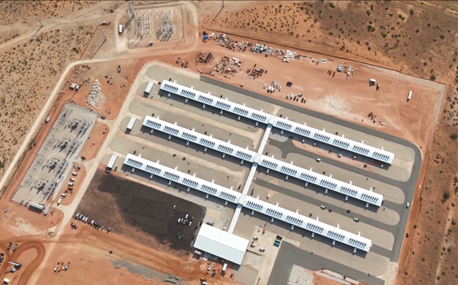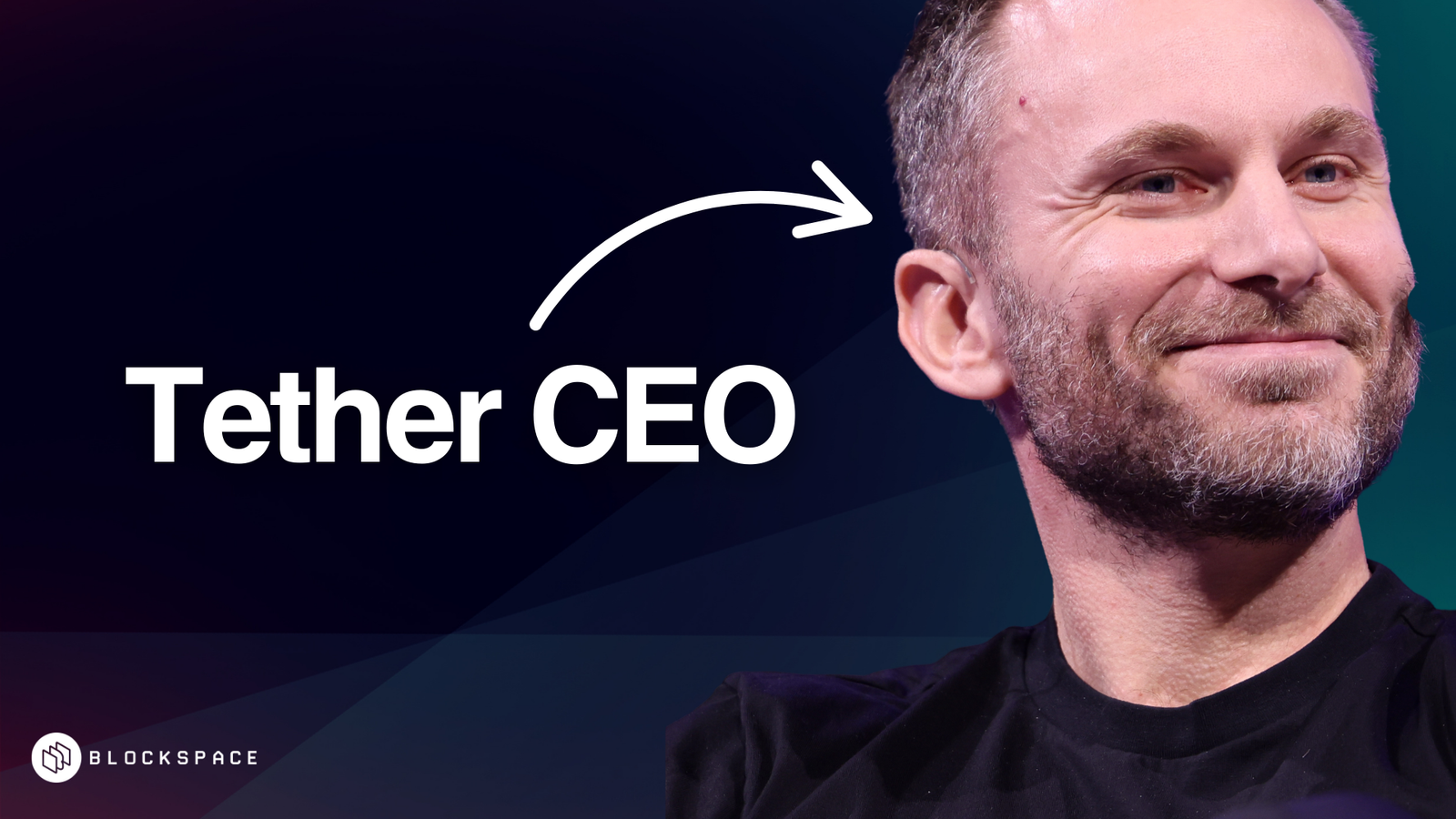What caught our eye this week
A hashrate arms race is ramping up between the US, Russia, and China
Bitcoin’s hashrate hit yet another all-time high, topping out at a 7-day average of 741 EH/s on October 25, despite an all-time low hashprice environment.
While a lot of this hashrate is US-based miners energizing S21s & M60s, that only tells half of the story. But a significant amount of new hashrate can be attributed to US’s largest geopolitical rivals: Russia and China.
This excerpt is from this week’s Mining Pod newsletter. You can subscribe to the newsletter here to get analysis like this in your inbox every Wednesday.
“Based on our client base we believe the majority of growth in hashrate is coming from the United States,” Ethan Vera, the COO of bitcoin mining software and services company Luxor, told Blockspace Media.
Denis Rusinovich, a partner at bitcoin mining research and advisory firm CMG: Cryptocurrency Mining Group, says that now there is more transparency from Russian miners “for clients, suppliers, and financing counterparties” than ever before. Of the ASIC suppliers he knows who are active in the region, he said that “almost half” of their business comes from miners in Russia. “I expect next year some Russian players will list on local public markets,” he told Blockspace. Sanctions will prevent western investors from investing in these companies, of course, but Rusinovich said that plenty of capital from BRICS coalition countries will be open to these future opportunities.
Over in China, it’s difficult to get a clear picture. There’s a linguistic and informational blockade between China and the West, so it’s harder to pinpoint just how much bitcoin mining activity is transpiring in China currently.
The only proxy we can use to measure how much – mining pool data – is imperfect, but it’s the best gauge we have. All else being equal, Russian miners would have to use Chinese pools, since sanctions bar them from US pools. We can see, however, that USA-based pools (as a proxy for estimating US hashrate) are outpacing growth in Russia & China.

Bitcoin News
Runes creator Casey Rodarmor airdrops his first token to podcast subscribers
Patreon subscribers of Hell Money Pod got a free airdrop of Rune token MEMENTO•MORI from podcast hosts Casey Rodarmor and Erin Redwing. Casey posted the airdrop transaction hash on X, which was then transacted by community leader Lifofifo as a child-pays-for-parent transaction. Half of the rune’s supply was then publicly minted the same day, causing fees to increase 100x for a few blocks.
Cleanspark completes acquisition of GRIID
Cleanspark’s acquisition of GRIID is now finalized. The public miner intends to build over 400 MW in Tennessee, adding to GRIID’s existing 50 MW, and the acquisition brings notable Bitcoin voices Rory Murray and Harry Sudock, among other GRIID employees, into Cleanspark’s fold.
A solo miner mines a solo block
Generally speaking, recent “solo blocks” have almost always come from miners who, while running minimal hardware, used “solo pools” like CKPool to mine and broadcast their blocks. This past week, we saw confirmation that a true solo home miner using a FutureBit Apollo Solo hit a block and broadcasted it without the use of a pool!
This Week in Raises
- B² Network closes another round from notable crypto investors, OKX, Hashkey, Animoca
- Citrea raises $14m Series A led by Peter Thiel’s Founders Fund
- Bitsmiley raises a second round of $10m for “BTC-backed DeFi innovation”
Chart of the week
“Bitcoin ecosystem is NOT growing in TVL.“ – FarmerJoe
It looks like despite a modest recovery in asset prices on Bitcoin, the overall market cap of assets on Bitcoin has continued to decline.






